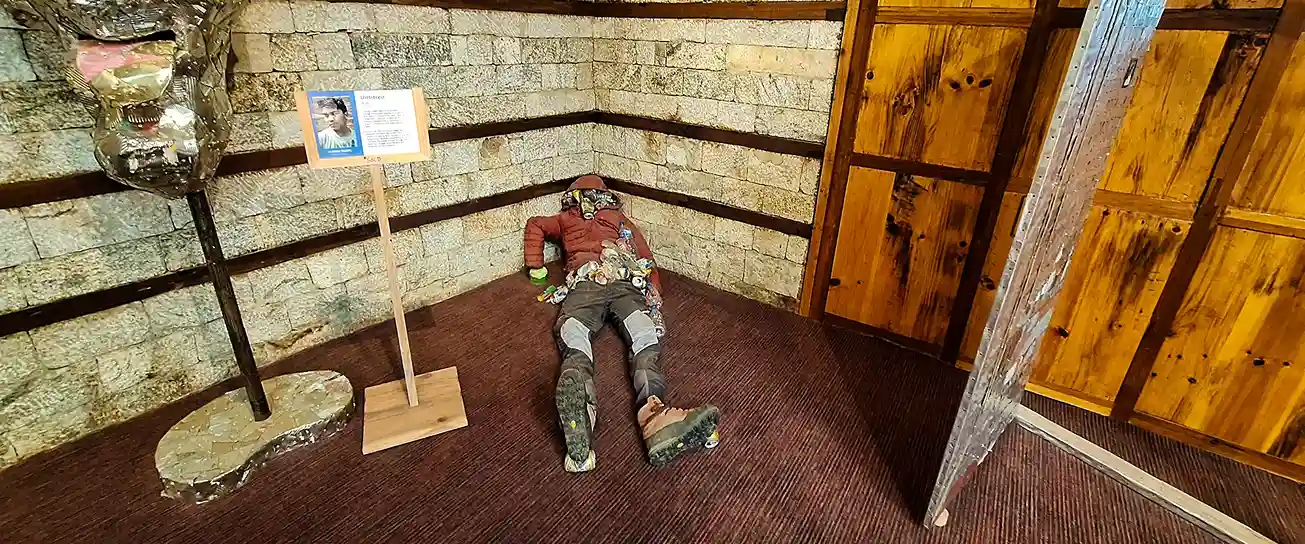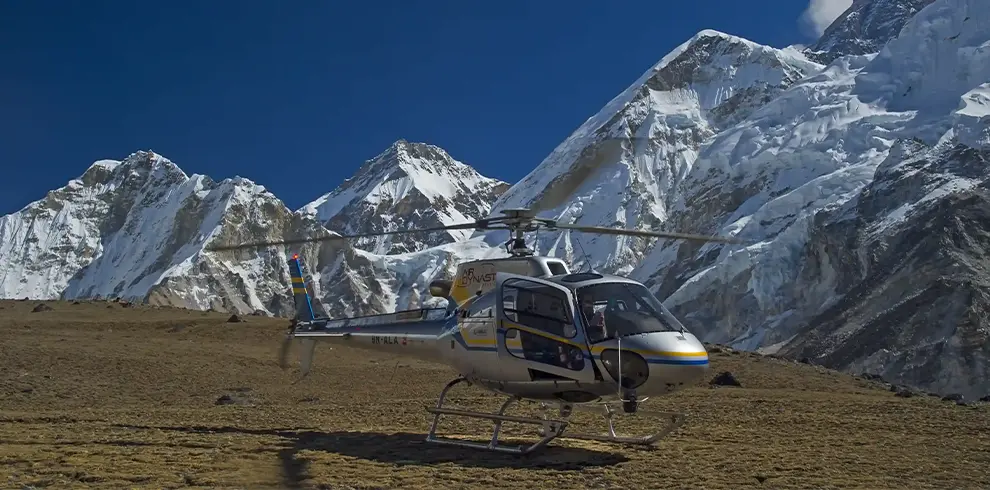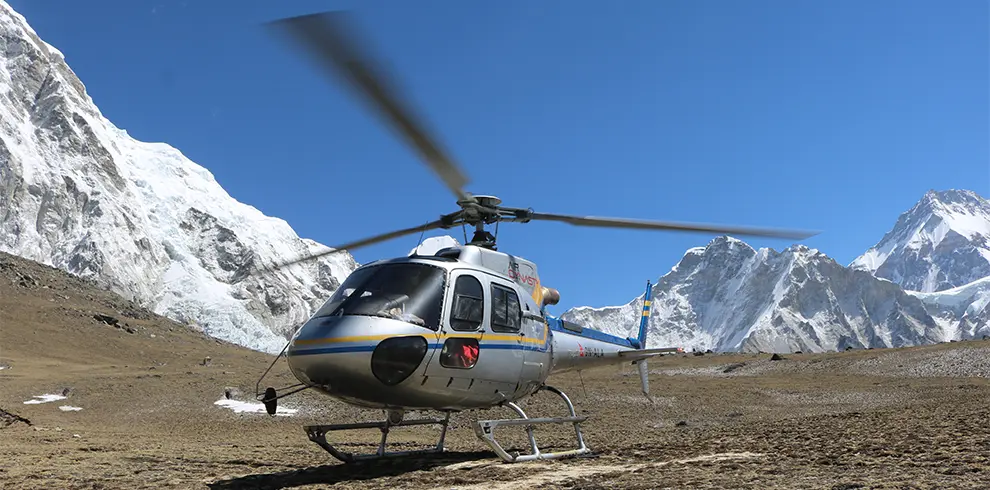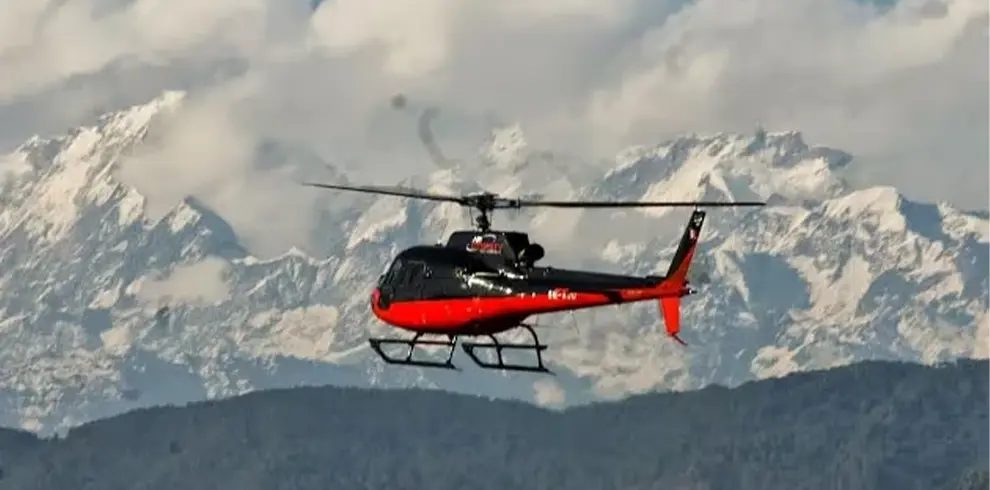Recent restrictions of Everest Base Camp Helicopter Tour
The Everest Base Camp helicopter tour, once renowned for its thrilling journey to the world's rooftop, has recently undergone significant changes. Unfortunately, the Civil Aviation Authority of Nepal (CAAN) has imposed new regulations prohibiting helicopter landings on Kala Patthar, altering the essence of this once-in-a-lifetime experience.
Previously, the helicopter tour to Everest Base Camp (EBC), including a majestic landing at Kala Patthar, was regarded as the best tour in Nepal. Kala Patthar, renowned for its unparalleled perspectives of Mt. Everest, sunrise, and sunset, marked the culmination of this extraordinary journey. However, due to safety concerns stemming from an unfortunate incident involving a Manang helicopter, CAAN has suspended most Everest helicopter operations and landings at Kala Pattar.
This prohibition extends to shared helicopter flights, which were once a popular option for individuals to pool resources and embark on a group helicopter flight to Everest Base Camp. Regrettably, shared chopper flights from Lukla are no longer available, eliminating the possibility of a collective helicopter journey to Everest with a landing at Kala Patthar.
Presently, the only option available is a private helicopter ride, with a limited capacity of two passengers, stopping at Gorak Shep en route to the base of Everest. This shift in regulations is a direct result of a tragic helicopter accident in July 2023, which occurred at Lamjura in Likhupik rural municipality in the Solukhumbu district, claiming six lives. CAAN has responded by implementing stringent security guidelines to enhance safety and security standards for helicopter operations in the Everest region of Nepal.
Despite the ban on landings at Kala Patthar, helicopter operations for search and rescue purposes have not ceased. Tourists can still be rescued using helicopters with prior permission, allowing for the transportation of delicate goods. Additionally, tourists are permitted to fly in and land under specified conditions. However, routine Everest Base Camp Heli tours with landings at Kala Patthar have been halted.
Park authorities have called for cooperation from various stakeholders, including the police administration, hoteliers, lodge operators, civil aviation authority, intermediate zone management committee, and the park's protective force. They aim to strictly enforce the no-landing policy, except on designated helipads within Lukla, Syangboche, and Namche Bazaar within the national park.
The prohibition on Kala Patthar landings is currently in effect until further notice. However, an alternative landing site is available at the Everest View Hotel in Namche. CAAN's decision to enact this rule is a preventive measure, reinforcing safety and security standards in the aftermath of the tragic helicopter accident in July 2023.
The Everest Base Camp Heli tour has undergone a significant transformation in response to these regulatory changes. While the journey remains one of the greatest adventures, the itinerary has been adjusted to accommodate the new situation. Before the ban on Kala Patthar landings, the tour typically initiated at Kathmandu's Tribhuvan International Airport, offering passengers a glimpse of the ancient heritage sites of the Kathmandu Valley as they soared above in the helicopter.
The updated itinerary now starts directly from Kathmandu to Lukla in phase 1. After a brief stop at Lukla for refueling in phase 2, the helicopter proceeds to fly over Pheriche, Kala Patthar, and Everest Base Camp before finally landing at the Everest View Hotel for a scenic breakfast with Mt. Everest as the backdrop. The revised route provides a different perspective on the Everest region, ensuring that the Everest Base Camp helicopter tour remains a memorable and awe-inspiring journey.
In a broader context, the Civil Aviation Authority of Nepal (CAAN) has implemented new regulations with immediate effect to strengthen the country's helicopter flight safety. These changes come in response to the fatal crash of a Manang Air chopper in Solukhumbu, claiming the lives of all six individuals on board on July 11.
Key changes under the new regulations include the formation of a team to daily control and supervise helicopter and Short Take-off and Landing (STOL) operations. This team is tasked with ensuring the safe and efficient conduct of all helicopter flights.
Additionally, either the point of origin or destination during helicopter operations must now be an aerodrome, disallowing landings or takeoffs from non-controlled aerodrome locations such as rooftops, helipads, or open fields.
A significant centralization of permission for helicopter operations, including rescue flights, at the Air Transport Department (ATD) has been introduced to ensure thorough review and approval before takeoff.
The regulations also impose restrictions on non-essential flights, such as mountain flights, external load operations (sling flights), and helicopter showers of flowers until September. This measure is intended to reduce the number of helicopter flights during the challenging monsoon season.
Moreover, the regulations mention the prohibition of flight crew members who have a share in the company from exercising the privileges of their license for all types of commercial flights. This provision, expected to come into effect in a few weeks, aims to prevent conflicts of interest.
In conclusion, these comprehensive changes are a response to the increasing number of helicopter crashes in Nepal, with 35 fatal incidents recorded by CAAN. The regulations prioritize safety and aim to address challenges in helicopter flight operations, ensuring a safer and more secure aviation environment in the country.
















